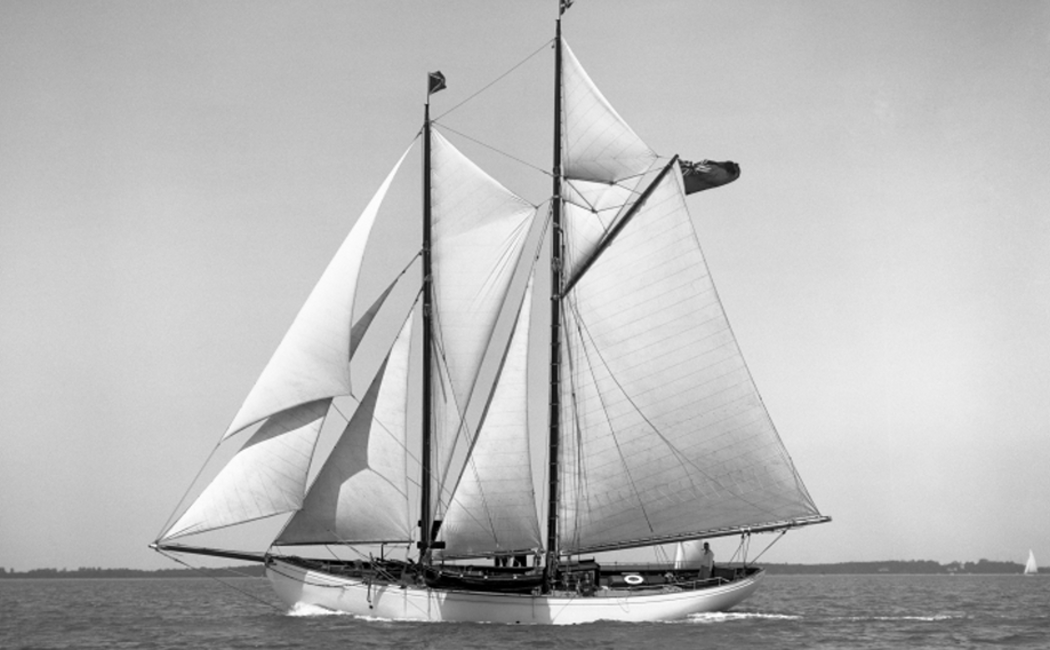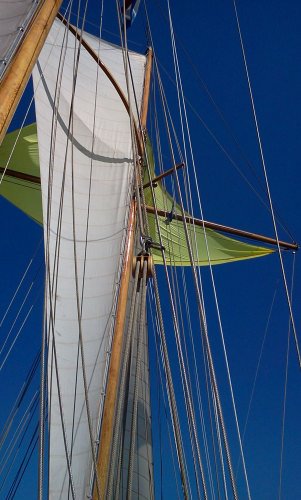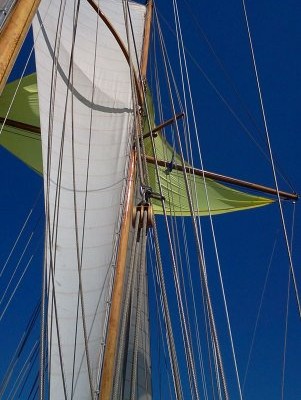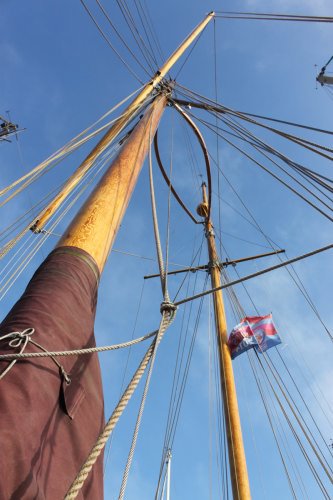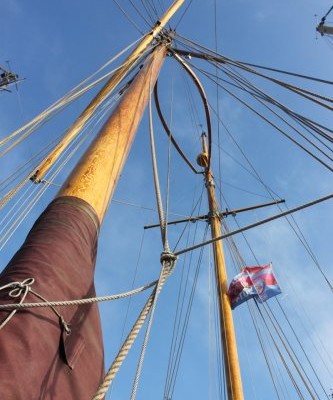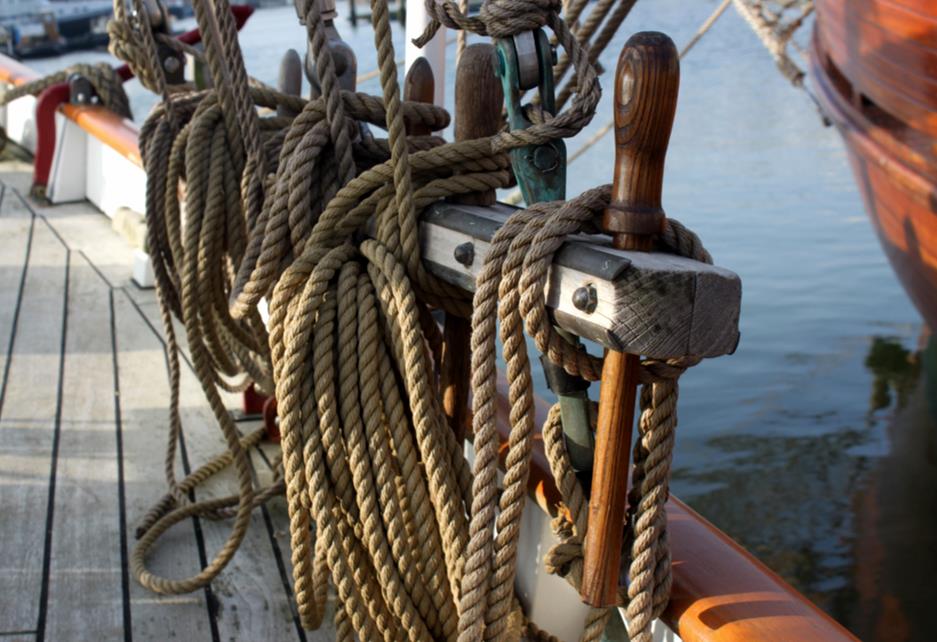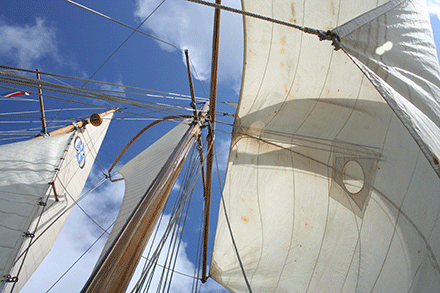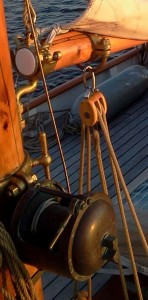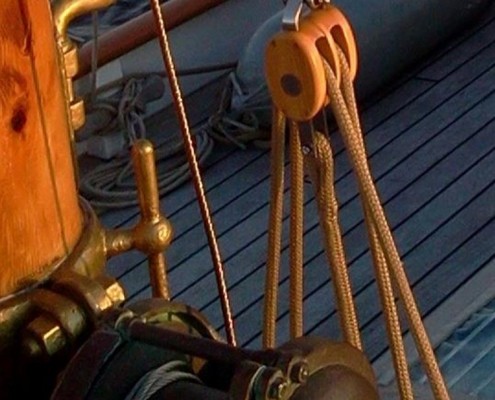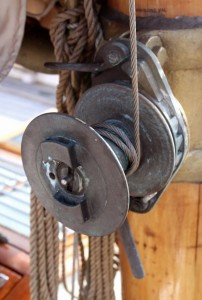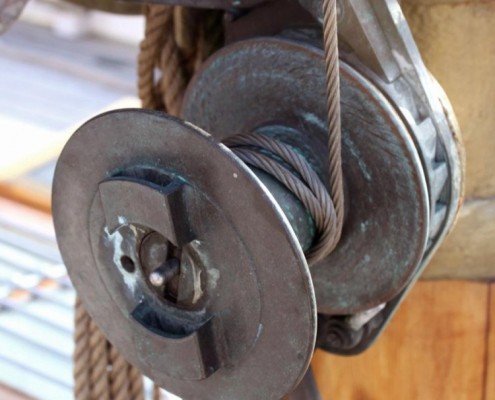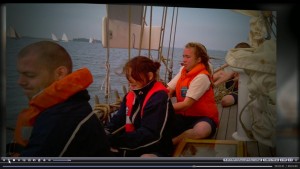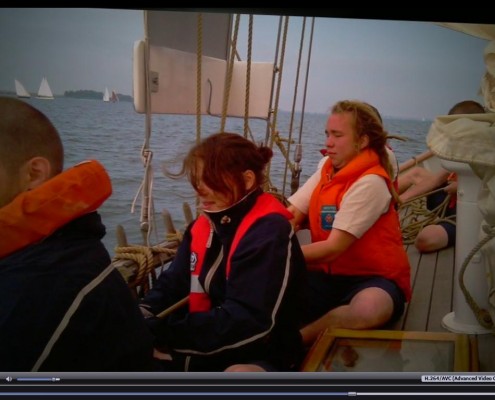Sailing a classic yacht will provide you with all the ambiance, grace and style of the classic by-gone era of boating. Important for the presentation and appearance of a classic yacht is the overall look. True classics, features acres of sail, graceful lines, gleaming brass, rich woodwork and fine craftsmanship.
Outside, on the open seas, the sails are giving the first impression of the beautiness of a yacht.
Owing a true classic means supporting and spreading the culture of maintaining and restoring vintage and classic yachts. Highlighting the importance of preserving the yachts’ original structural soundness and its’ historical and aesthetic values. I strongly feel that vintage and classic yachts should keep their qualities and original features, their characteristics and functional abilities. Based on this philosophy, the refit of Carrina was done.
Rigging
Originally, in 1914, Carrina was designed as a ketch. But never built as such. In 1929 she was launched as a stay-sail schooner.
Two masted, main and schooner (mizzen) mast, but in contrast to a schooner the sailplan is without the boom and gaff foresail on the schooner mast. The space between the fore and main masts is filled by a boomed staysail. In case of Carrina the gap betwee both masts is filled with a wishbone sail almost above the boomed staysail.
The advantage of the staysail schooner is that it is easily handled and reefed by a small crew. Going about is easier. The boomed sails tacks by themselves, no sheet handling necessary…
The very first English yacht with a wishbone rig
Launched as a gaff-rigged top/staysail schooner, Carrina was originally built with all MacGruer spars. The length of her boom on the main was originally 28 ft. (8,53 m) and about 6 ft. (1,80 m) beyond the stern.
During the Thirties, she was de-rigged every winter, her masts taken down and the ship stored in a barn at Camper & Nicholsons in Southampton.
From april 1935 Carrina became the first (European)yacht with a running wishbone rig.
Laurent Giles and Partners was the first shipyard whose designers were very enthousiastic about the new rig and they got the chance to create the first wishbone in England, for the Carrina.
According to Carrina’s owner Mr. Blackborow, adding the wishbone was a good decision: “her sailcapacity was much improved with the wishbone. Specially closer winded and neither the sail nor the wishbone gives any trouble”.
This quote was published in the Yachtsman’s Yearbook 1935.
The folowing quote of Ian Staniland, who sailed on Carrina for more than 25 years, shows another experience:
“You will be interested to know that my father, on buying her, was told by an old captain of the boat, never to use the wishbones as they were nothing but trouble as the topping lift used to regularly part. My father cured this problem by putting in a fixed wire pendant and we regularly used the wishbones for lifting heavy gear and boats aboard and stepping smaller boats masts with the vange led down to the hydraulic windlass.”
So at the end the wishbone turned out te be a multi disciplinary and functional improvement on the Carrina.
Carrina survived WW II, de-rigged in a mud berth at Camper & Nicholsons with the spars stored ashore in a barn. Almost all these MacGruer spars were destroyed when C&N’s facilities were extensively damaged in numerous air raids in 1941 during the ‘Southampton Blitz’. Only the main staysail boom and the main gaff survived the heat of the fire.
Later in the fifties, when turning the gaff rigging into an easier handling Bermudian rig, the original gaff became the new squareyard.
Rerigging Carrina in the early fifties the masts were unstepped and a track added to the main mast. Also 10ft (3,50 m) was cut off the main boom, to convert her to a Bermudian staysail schooner for easy handling in the Caribbean.
Turnbuckles by Lewmar, all terminals are Norsemen. Squareyard rigged on schoonermast for trade wind and/or down wind work.
During our refits in 2005, we noticed that many of the clamps, fairleads and other fittings were made of brass. We found these all silvercolour painted, but now we’re in an ongoing process trying to have them (brass) shining again.
RIG, Booms and SPARS
- Columbian pine spars 1945, originally all MacGruer
- Stainless steel standing rigging – Norseman fittings
- 3 strand Marlow running rigging
- Boom with roller reefing and traditional square sail
- Mainstay sail boom is the original McGruer 1929
- Square yard is the original McGruer former gaff 1929
Sails: up to 2,034 sq feet / 189 sq m sail area
Winches: Carrina is equipped with two halyard winches
- 1 x bronze 2 speed winch on the main
- 2 x single speed bronze winches, both toppinglift and clew lift of the wishbone; all self winding cable
But no sheet winches on deck.
When racing, we are in need of a lot of Muscle Power. Tacking keeps the crew in condition.



